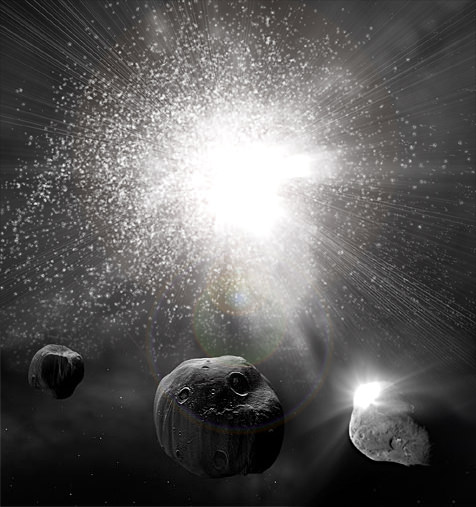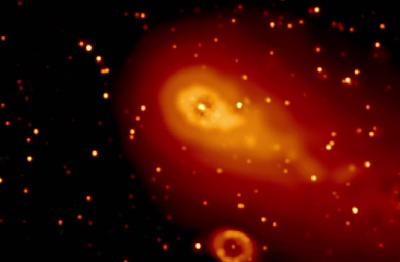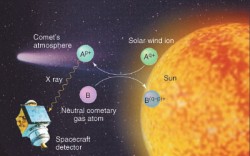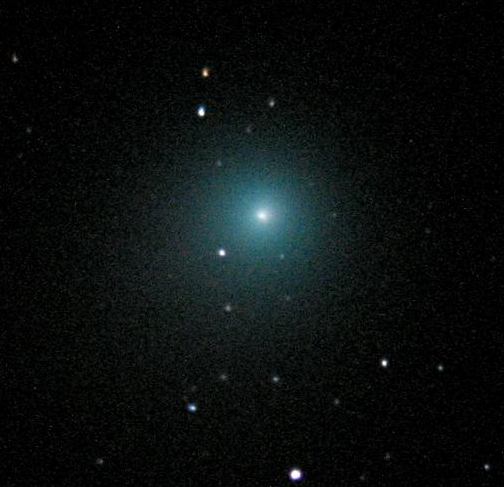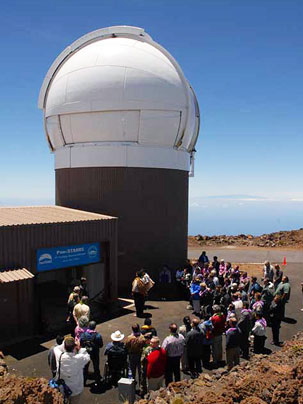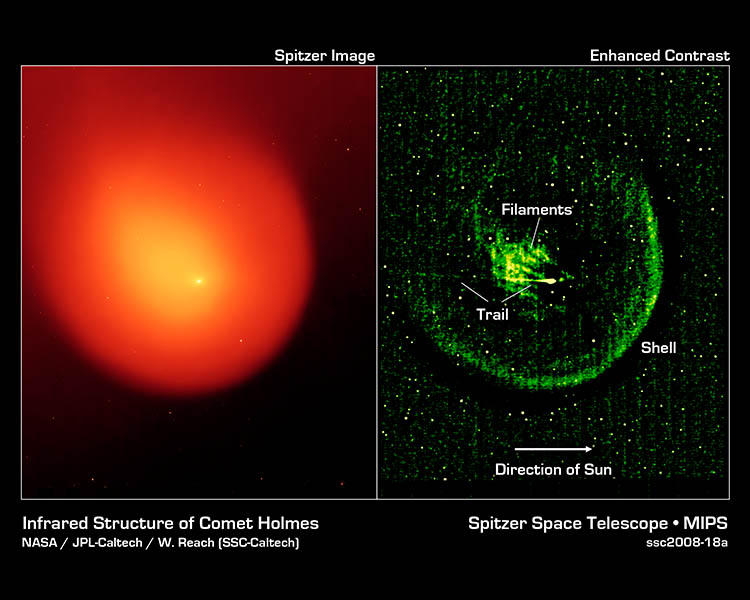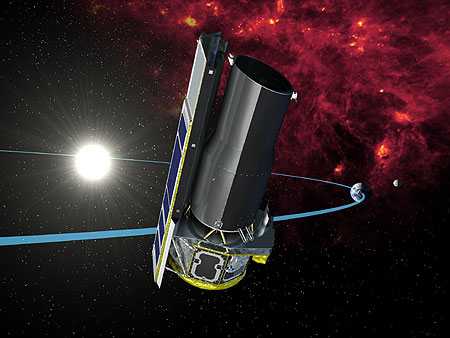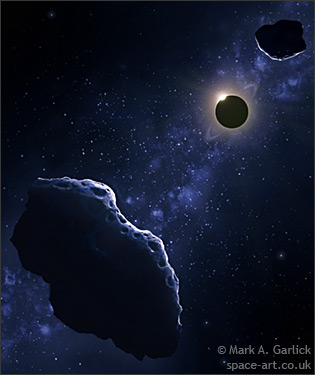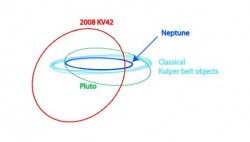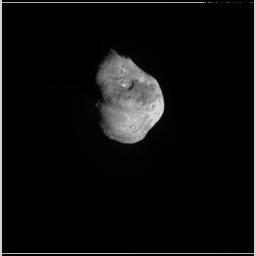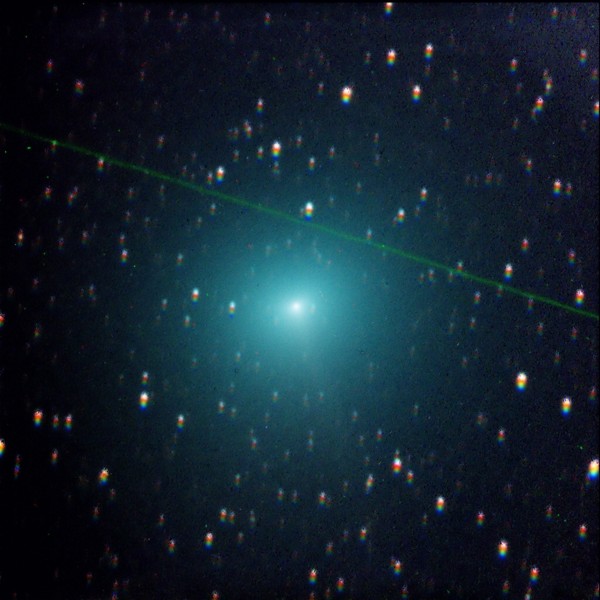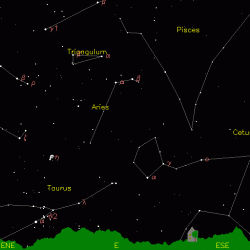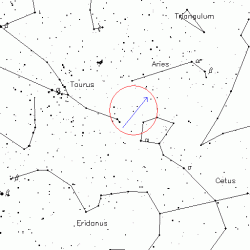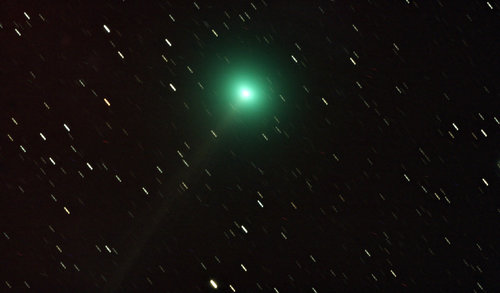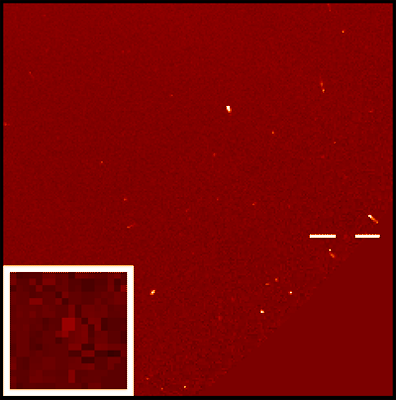[/caption]According to 2012 doomsday proponents, something big is out to get us. By “something big” I mean some uncontrollable cosmic entity (i.e. Planet X, Nibiru or a “killer” solar flare), and by “us” I mean the whole of planet Earth. Pinning 2012 doomsday scenarios on the end of the ancient Mayan “Long Count” calendar appears to be growing momentum amongst authors, websites, documentaries and (my personal favourite) YouTube videos. According to them, something bad is going to happen on or around December 21st 2012. Probably the most interesting difference between the 2012 doomsday scenario and the doomsday prophecies of the past is that almost every possible (and impossible… or implausible) harbinger of doom is being suggested as a planet killer.
So, in this sixth article addressing another astronomical doomsday scenario, I will look at the theory that there is a comet currently out there in deep space, slowly making its final approach on its parabolic orbit toward Earth. But before you get worried, you’ll be glad to hear that the 2012 cometary impact theory is as watertight as a teabag; there is no object observed out there and there is certainly no evidence to suggest there could be a comet impact in 2012… and here’s why…
Marketing Doomsday
In four years today (2012 21-December), the world will be coming to an end according to a few misguided individuals. Doomsayers always begin their arguments using an ancient calendar (plus a heavy dose of Bible Codes, I Ching and ancient Sumerian cuneiform scriptures) to support their new and inventive way the world may end. Alas, most doomsday theories are based on over-hyped scientific misinterpretation and outright lies. Usually there is a book to sell or website to promote. After all, there is nothing more profitable than fear.
Interestingly, I started writing for the Universe Today a year ago today, exactly five years before the end of the Mayan Long Count calendar. Don’t go reading too much into this little fact, pure coincidence, but I think it would be fitting to write the sixth in my series of 2012 articles exposing the myths surrounding this date.
You’ve probably seen the prolific ads for the “2012 Comet” across a range of websites, so I decided to delve into this particular theory to see if there is any truth behind the claims that a comet (or “comet planet”) is approaching Earth on a collision course. To cut a long story short, I can categorically say that no cometary impact is imminent. Any accusations of government cover-ups are to hide the poor science doomsayers are citing (much like the Planet X/Nibiru connection). If you want the long story, read on…
The Comet Threat

Although rare, planetary impacts by comets do happen. As Shoemaker-Levy 9 showed us in 1994 when 2km-wide fragments of the comet bombarded the Jovian atmosphere, we mustn’t be complacent when considering a large impact event by comets or asteroids. The dazzling light show by Shoemaker-Levy 9 actually stimulated efforts to increase sky surveys for a possibly catastrophic impact event. Although a vast number of near-Earth objects (NEOs) have been identified, a very small number are considered to be a risk.

The 270 meter-wide asteroid 99942 Apophis caused a stir in 2006 when it became the highest ranking asteroid on the Torino impact hazard scale. Apophis is now expected to glide safely past the Earth in 2029, but depending on the gravitational deflection caused by Earth in 2029, Apophis could pass through a gravitational “keyhole”, creating another impact possibility on April 13th, 2036. Still, the odds are not worth betting on; would you put money on a 1 in 45,000 chance of an Apophis 2036 impact?
There are other lumps of rock out there, but most are benign, and certainly not a threat to everyday life in 2012. However, we must be aware that asteroids are a very real future threat to humanity. As a result of this increased awareness, other NEOs have been discovered and tracked. Objects such as 2007 VK184, a 130 meter-wide asteroid may cause problems in the distant future, but the probability of impact is still extremely low. Astronomers from the Catalina Sky Survey estimate a few possible impact dates for 2007 VK184, but the odds never exceed a 0.037% chance of hitting Earth in the next 100 years. Other asteroids are currently being tracked and they may cause some concern over a century from now (although none surpass a Torino scale of Level 1, and if they do, all tend to fall back to the “normal” Level 0).
In short, the skies are clear from any imminent (certainly within the next 4 years) impact from an asteroid. Comets do not feature as a significant risk either. There is no astronomical evidence supporting otherwise.
This doesn’t stop organizations such as ex-NASA astronaut Rusty Schweickart’s B612 Foundation from planning for possible future asteroid/comet threats. While Hollywood movies would have us believe blowing a comet up with a nuclear bomb will be a very good idea, the B612 Foundation disagrees. In fact, it could be a very bad idea. The key thing to remember when reading about NEO surveys or asteroid/comet deflection techniques is that we need a lot of lead time to stand any hope of deflecting a possible catastrophic impact event. This does not indicate a concern in the near future, it is simply a prudent precaution to safeguard the distant future of our planet.
The 2012 Comet-Google Conspiracy

So why are we seeing ads touting the “2012 Comet” theory? As far as I can tell, it is based on one very flimsy piece of evidence. So, lets load up Google Earth to see where the problem is…
If you have Google Earth installed on your computer, you have the ability to look “up” rather than just down at the Earth’s surface. Switching the software to the night sky allows you to see the constellations and will guide you and a dazzling tour of the observable Universe. Despite this overload of information, is Google hiding something? Is the huge search-engine based company actively trying to hide observations of a comet from us?

Guide Google Earth to RA:5h 54m 00s, Dec: -6° 00′ 00″ and zoom in. If you don’t have Google Earth, this region can also be found in the online version of Google Sky. You’ll see an ominous rectangular void (a.k.a. the “Google Anomaly” in the images above) right next to the Orion Nebula, south of Orion’s Belt.
Note: The Constellation of Orion and therefore the “Google Anomaly” is in a very conspicuous location of the night sky, observable from northern and southern hemispheres.
This void is only apparent in the optical data; if you switch the data set to the microwave survey carried out by the Wilkinson Microwave Anisotropy Probe (WMAP), you’ll find the void is replaced by data. Also, infrared data covers the region pretty nicely.
Note: This infrared view of the sky was observed by the Infrared Astronomical Satellite (IRAS).
So, the theory is that Google is hiding observations of an incoming comet. But there is an added twist to the comet conspiracy theory; the comet is also referred to as a “comet planet” and therefore a Planet X candidate (but I thought Planet X was a brown dwarf candidate?). Yes, Planet X seems to be at the root of all doomsday scenarios.
I’ll try to make this as quick as possible:
1) IRAS Data

So, is this “2012 comet” actually Planet X? If it is (disregarding the obvious fact that a comet is not a planet, let alone a brown dwarf), why is the Google Anomaly only a void patch in optical data? If Google and NASA were trying to hide evidence of a “comet” (by removing a region of optical data), surely they’d remove the IRAS data too? In any case, the IRAS data shows no object within the anomaly. Besides, why would Google leave a very obvious patch of missing optical data, when they could have just airbrushed the object from the dataset?
In conclusion, the Google Anomaly is in fact missing data, pure and simple. There’s no comet there, and simply because there is missing data does not prove the existence of anything sinister.
2) Just Look Up
Just in case you needed a little more convincing that the 2012 comet/Planet X theory was complete bunkum, think about the location of this proposed comet. The Google Anomaly is in full view for most of the planet throughout the year as it is in the constellation of Orion, right in the neighbourhood of some of the most famous, and well-studied stars and nebulae (the Horsehead Nebula and the Great Orion Nebula for example). If anyone looks at the Google Anomaly with suspicion, why not look straight up and see for yourself? Amateur astronomers have access to very advanced optics, so I think that if there was a suspect “comet planet” in the region, it would have been spotted by now (without Google’s help).
In Conclusion
The truth is that the Planet X conspiracy theory is wrong, but the 2012 comet theory is even worse. The chances of a large planet swinging through the inner solar system in 2012 has the same odds as a comet impact on that date: nil.
We cannot predict the future, and no ancient prophecy will prove the existence of a modern astronomical “end of the world” scenario. I am sure 2012 will be a significant year for spiritual and religious reasons, I’m not debating that. However, for doomsayers to use modern science to prove their inaccurate doomsday creations for personal gain is not only irresponsible, it can be very damaging.

